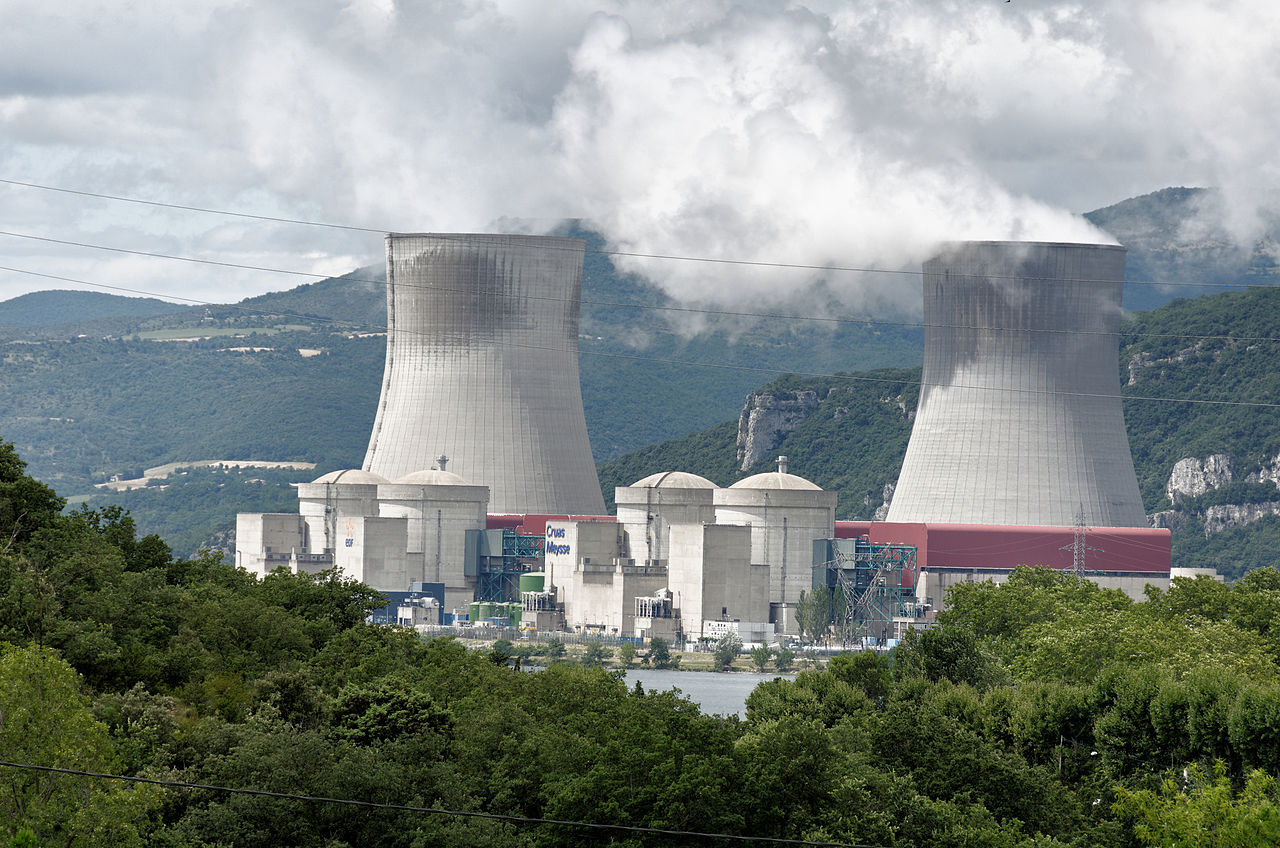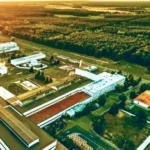After last year’s preparations, which included selecting the technology for Poland’s first NPP and choosing the location for small reactors, the time has come to face the red tape. Reactors are not built without meeting environmental and safety standards, and these are verified by the relevant administrative bodies.
Reactors large and small vs. safety and environment
On the first day of the week, the State Atomic Energy Agency issued a general opinion on safety analyses of the nuclear power plant in Pomerania. The Poles want to launch the first reactor in 2033, and by 2043 they want to have 6-9 GW capacity in nuclear power. The technology chosen for the Pomeranian location is AP1000 from the American Westinghouse, which partnered up with Bechtel, operator of nuclear facilities.
„This is the first such opinion in the country in the field of nuclear safety. The scope of the planned, independent verification of safety analyses presented in the application submitted by the Polish Nuclear Power Plants (PEJ) was considered correct,” a press statement said.
PEJ explains that safety analyses are part of the process of assessing the safety of a nuclear facility, carried out systematically at the design stage and then during the operation of a nuclear facility. Their aim is to ensure that all nuclear safety requirements are met from the start to the end of the operation of the nuclear facility. „In practice, safety analyses boil down to the creation of computational models that map the functioning of a nuclear facility under all possible conditions, including emergency ones. In addition, many calculations are carried out using verified and validated analytical tools. The analysis of the results obtained is then compared with the requirements for nuclear safety,” a press statement said.
Four days after the PEJ’s news, the Director General of Environmental Protection announced that he was launching an environmental decision procedure for the construction of the BWRX-300 modular nuclear reactor near Oświęcim. This is a response to the proposal of Orlen Synthos Green Energy, a company that is to build small nuclear reactors (SMR) in Poland.
The American BWRX-300 reactor from GE Hitachi will be evaluated by the General Directorate of Environmental Protection (GDOŚ) for the issuance of a decision on environmental conditions for the construction and operation of the site Stawy Monowskie, 10 km east of Oświęcim. The proposal, which is expected to be processed by GDOŚ within two months, concerns power plants with a total capacity of up to 1,300 MWe.
„Notification of the General Director of Environmental Protection of 15 June 2023 […] on informing the parties to the proceedings on the initiation at the request of the BWRX-300 Stawy Monowskie SP. z o. o. the procedure on issuing a decision on environmental conditions for a project consisting in: the construction and operation of a small modular nuclear power plant with a total capacity of up to 1300 MWe in the BWRX-300 technology in the location of Stawy Monowskie, the municipality of the city of Oświęcim,” GDOŚ wrote in a press release. BWRX-300 Stawy Monowskie is a limited liability company, registered on April 17, 2023.
Moreover, a small reactor from GE Hitachi already has a green light in Poland in terms of security. In May 2023, the State Atomic Energy Agency (PAA) stated that the design of the BWRX-300 reactor is in compliance with nuclear safety requirements. PAA verified if the unit has enough protection against external and internal threats, and whether it meets the standards when it comes to the control room, reactor core and electrical systems.
Stawy Monowskie, a village located in the municipality of Oświęcim, is one of the locations where Orlen wants to build modular nuclear reactors. The company also identified such places as Włocławek, Ostrołęka, Dąbrowa Górnicza, Kraków-Nowa Huta, as well as the Tarnobrzeg Special Economic Zone, which includes Tarnobrzeg and Stalowa Wola. PKN Orlen claims it will be able to build the first small-scale reactor in 2028 or 2029.
KGHM and LSSE research
The red tape phase of nuclear prep in Poland also involves cooperation agreements between businesses that want to build the nuclear reactors across the country. On Thursday, KGHM signed a letter of intent with the Legnica Special Economic Zone (LSSE), and their cooperation will include analysis of available small nuclear reactor technologies.
In 2022, KGHM signed a contract with NuScale Power, an American nuclear technology provider, to help implement small reactor technology in Poland. The U.S. company has received certification for the 50 MW module from the U.S. Nuclear Regulatory Commission (NRC). In April of this year, the copper tycoon submitted an application to the Ministry of Climate and Environment for a basic decision for the construction of a small modular nuclear power plant (SMR). It is currently awaiting a general opinion from the Climate Ministry on the selected conditions for the construction of a 462 MW power plant consisting of six modules, each with a capacity of 77 MW.
Cooperation between KGHM and the Legnica Special Economic Zone will include analyses of available small nuclear reactor technologies and search for best practices in conducting research and measurements in order to examine the geological and geotechnical conditions of SMR locations. Joint actions will also be taken to support the development of SMRs in Poland, including changes in legislation related to public financing of such projects. Legnica Special Economic Zone is a company that is engaged in attracting investors in the south-western Poland, in the Lower Silesian Voivodeship.
„Our company has a modern approach to transformation and climate solutions. We are pursuing a climate policy that aims to achieve climate neutrality by 2050. We prove that small modular reactors are not only the future, but the most realistic answer to the energy needs of large industry. The cooperation with LSSE is another step in the implementation of our objectives,” said Tomasz Zdzikot, President of KGHM
Red tape at the Sejm
By definition, this cumbersome but necessary paperwork also includes legislation. On Tuesday, the Minister of Climate and Environment Anna Moskwa said that work was underway on an amendment to the nuclear law.
„In July 2023, we want to adopt a draft of a more comprehensive amendment to the investment in nuclear energy law, which is to simplify and accelerate investments in large and small reactors,” the Minister told the Polish Press Agency (PAP).
PAP asked Anna Moskwa if there would be a separate law on small modular reactors (SMR). The Minister also said that the July update would also make the implementation of SMR projects simpler. „We are working on the draft update with all market participants,” she stressed.
In mid-March, President Andrzej Duda signed an amendment to the act on investments in nuclear energy facilities. „The amendment to the act on the preparation and implementation of investments in nuclear power facilities provides for the expansion of the catalogue of investments accompanying the construction of nuclear power plants, in particular those necessary for conducting environmental and location studies for the construction of the power plant itself and associated infrastructure,” the Polish Press Agency wrote.
After the amended Investment Act entered into force in April 2023, the Polish Nuclear Power Plants (PEJ) submitted to the Ministry of Climate and Environment an application for a decision-in-principle for the first nuclear power plant with a capacity of up to 3750 MWe specified in the Polish Nuclear Power Programme (PPEJ) in the following municipalities: Choczewo, Gniewino or Krokowa.
Europe is at it as well
France, Finland and Sweden also made some moves in the past week when it comes to nuclear energy.
It was first reported that the French government ended the acquisition of shares of the EDF Group and thus for 9.7 billion euros Paris has nationalized the energy giant, which is to build new nuclear reactors. „The nationalisation will allow EDF to accelerate its programme to build new plants and increase the number of nuclear reactors,” Economy and Finance Minister Bruno Le Maire said in a statement.
The decision to acquire EDF was made in July last year. According to the Polish Press Agency, the French government intends to entrust EDF with the task of building new nuclear reactors, but as the AFP agency notes, the group’s financial capabilities are limited due to its situation. EDF has serious problems, and when it presented its 2022 results in mid-February, it revealed that the company’s debts amounted to 64.5 billion euros, because more than half of its 56 reactors were immobilized for some time last year, either due to maintenance work or corrosion.
News also came from Scandinavia, where it turns out that the American Westinghouse, which is supposed to build reactors in Pomerania, will also explore such a possibility in Sweden and Finland (although some textbooks do not describe the latter as Scandinavia).
What happened? America’s Westinghouse and Finaland’s Fortum signed a memorandum of understanding on June 7 to explore the possibility of building AP1000 reactors (as in the Polish Nuclear Program) and AP300 in Finland and Sweden. The next stage is to prepare technical and commercial conditions for such cooperation in both countries.
Why did this happen? Fortum has had the painful experience of building the third reactor at the Olkiluoto Power Plant in cooperation with France’s EDF that offered the French EPR technology. The project was delayed by 12 years and was launched in 2023.
Choices have consequences
Interestingly, Poland is talking to EDF about using the EPR technology at a second, undetermined location. As the Finnish example has revealed, red tape is not the only challenge when it comes to building reactors and many variables determine whether a given project will be successfull. One thing is certain, however, that Poland cannot afford further delays in nuclear energy and whether it will have an atom depends on its choices. In the future, it will be one of the pillars of its energy mix.
Jędrzej Stachura









